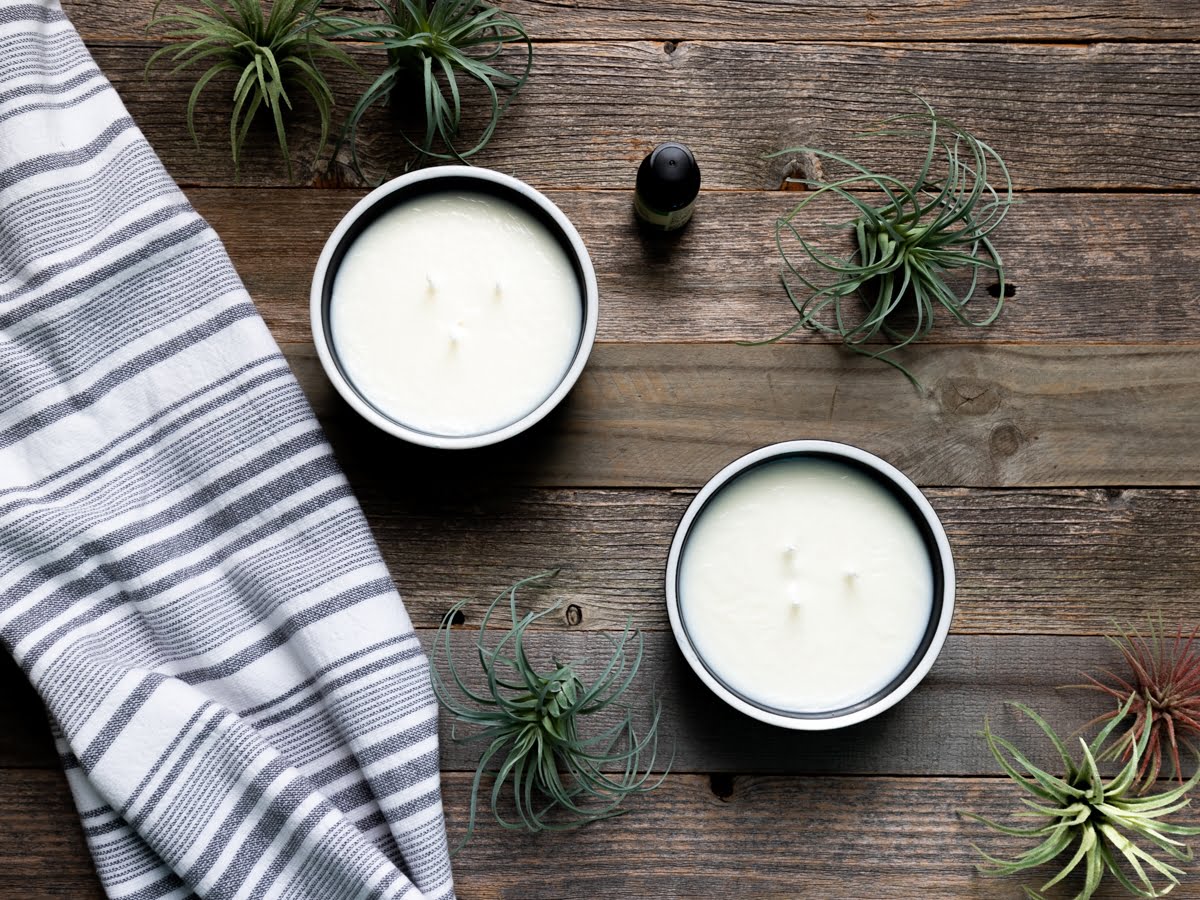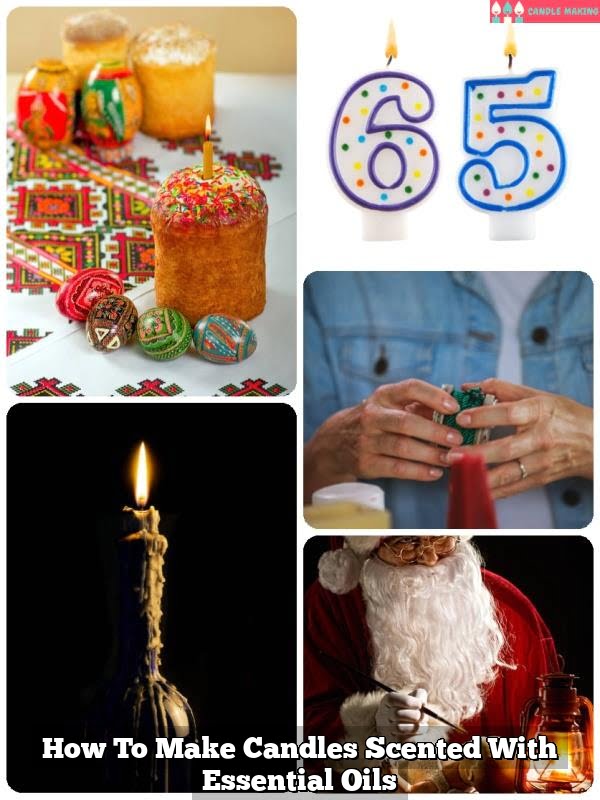Are you tired of the same old vanilla and lavender scented candles? Perhaps it’s time to delve into the world of unconventional scented oils for making candles.
From earthy and herbal to exotic and spicy, there are a plethora of unique scents that can add a new dimension to your candle creations. In this article, we will explore the different types and origins of unconventional scented oils, their benefits, how to blend them, important considerations, and even provide DIY candle recipes using these exceptional fragrances.
Unconventional scented oils offer a diverse range of aromas that can elevate your candle-making experience. These oils are derived from various sources such as flowers, fruits, herbs, spices, and more. Their distinct scents not only add a unique touch to your candles but also provide potential therapeutic benefits when used in aromatherapy. Whether you’re seeking inspiration from nature or exploring exotic scents from around the world, unconventional oils can expand your olfactory horizons.
One of the key advantages of using unconventional scented oils in candle making is the opportunity to create custom fragrances that stand out from traditional options. Additionally, these oils often possess complex and intriguing scent profiles that can evoke specific moods or enhance the ambiance of any space.
Through this article, we aim to highlight the creativity and versatility that comes with incorporating unconventional scented oils into your candle-making endeavors. Discovering new aromatic possibilities can be an exciting journey for both hobbyists and professional candle makers alike.
What Are Unconventional Scented Oils?
When it comes to making candles, traditional scents like vanilla, lavender, and sandalwood are popular choices. However, there is a whole world of unconventional scented oils that can add a unique and intriguing twist to your homemade candles. These unconventional scents can range from savory to floral to exotic, offering a wide range of options for creating custom candle fragrances.
Unconventional scented oils are derived from a variety of sources, including plants, fruits, spices, and even resins. Many of these oils have been used for centuries in perfumery and aromatherapy but are now gaining popularity in the world of candle making. Some examples of unconventional scented oils include black pepper essential oil for a spicy warmth, lemongrass essential oil for a citrusy freshness, and patchouli essential oil for an earthy and musky aroma.
The beauty of unconventional scented oils lies in their unique and unexpected notes that can elevate the olfactory experience of your candles. Whether you’re looking to create a cozy atmosphere with warm and comforting scents or add a touch of exoticism with complex and unusual fragrances, these unconventional oils offer endless possibilities for creating one-of-a-kind candles.
- Black pepper essential oil
- Lemongrass essential oil
- Patchouli essential oil
- Cedarwood essential oil
- Ylang ylang essential oil
Benefits of Using Unconventional Scented Oils in Candles
Unconventional scented oils for candle making offer a wide range of unique benefits and effects that set them apart from traditional fragrance options. These oils, which can be sourced from various natural and synthetic origins, provide an opportunity for candle makers to create distinct and captivating aromas that go beyond the standard scents commonly found in commercial candles.
One of the key benefits of using unconventional scented oils in candles is the ability to create truly unique and personalized fragrances. Many traditional candle scents are familiar and often mass-produced, leading to a lack of individuality. Unconventional oils open up a world of possibilities for crafting custom blends that reflect a person’s specific preferences or the theme of a particular occasion or event.
In addition to offering a more personalized olfactory experience, unconventional scented oils can also have specific therapeutic effects. Essential oils derived from plants, flowers, and herbs have long been utilized for their potential mood-enhancing, stress-relieving, and relaxing properties. By incorporating these unconventional oils into candles, individuals can enjoy not only an appealing aroma but also potential emotional and psychological benefits.
| Benefits | Effects |
|---|---|
| Unique fragrances | Custom blends reflecting individual preferences |
| Therapeutic effects | Mood-enhancing, stress-relieving properties |
Top 5 Unconventional Scented Oils for Making Candles
When it comes to making candles, the choice of scented oils plays a crucial role in determining the overall aromatic experience. While traditional scents such as lavender, vanilla, and citrus fruits are popular choices for candle making, there is a growing trend towards using unconventional scented oils to create unique and captivating fragrances.
These unconventional oils offer a myriad of benefits and effects that can elevate the sensory experience of candlelight. In this section, we will highlight the top 5 unconventional scented oils for making candles, showcasing their popularity and impact in creating aromatic candles.
Patchouli Oil
Patchouli oil is derived from the leaves of the patchouli plant and is known for its earthy, musky, and slightly sweet aroma. This unconventional oil is often used in aromatherapy for its grounding and mood-enhancing properties. When used in candles, patchouli oil adds depth and complexity to the fragrance while promoting relaxation and tranquility.
Nag Champa Oil
Nag Champa oil is a blend of floral and musky scents that originates from India. It is commonly associated with incense but has gained popularity in candle making for its exotic and captivating aroma. The rich combination of sandalwood, frangipani, and other floral notes creates a unique olfactory experience that can transport you to distant lands.
Frankincense Oil
Derived from the resin of the Boswellia tree, frankincense oil has been prized for centuries for its woody, spicy, and slightly fruity fragrance. This unconventional oil is revered for its calming and spiritual properties, making it a popular choice for meditation candles. Its complex scent profile adds an air of sophistication to any candle blend.
These are just a few examples of unconventional scented oils that have made their mark in the world of candle making. By incorporating these unique oils into your homemade candles, you can create truly one-of-a-kind fragrances that captivate the senses and elevate the ambiance of any space.
Whether you’re drawn to earthy tones like patchouli, exotic blends like Nag Champa, or spiritually evocative scents like frankincense, experimenting with these unconventional oils opens up endless possibilities for creating personalized aromatic experiences through candlelight.
How to Blend Unconventional Scented Oils
When it comes to creating custom candle fragrances using unconventional scented oils, the possibilities are endless. Blending different scents can result in unique and captivating aromas that enhance the ambiance of any space. Here are some tips and techniques for successfully blending unconventional scented oils to create custom candle fragrances:
1. Experiment with complementary scents: One technique for blending unconventional scented oils is to experiment with complementary scents. For example, combining floral notes with woody or earthy undertones can result in a well-balanced and captivating fragrance. Consider pairing unconventional scents like lemongrass, patchouli, or ylang-ylang with traditional essential oils to create unique combinations.
2. Use a scent layering approach: Another effective method for blending unconventional scented oils is to use a scent layering approach. Start by selecting a base note, such as sandalwood or vanilla, then add middle and top notes to build complexity and depth in the fragrance. This technique allows for the creation of multi-dimensional and sophisticated candle aromas.
3. Pay attention to scent intensity: When blending unconventional scented oils for candle making, it’s important to consider the intensity of each scent. Some unconventional oils may have a stronger aroma than others, so it’s essential to balance their proportions accordingly. Be mindful of how each oil interacts with one another and adjust the ratios as needed.
By employing these tips and techniques, candle makers can craft truly distinctive and memorable fragrances using unconventional scented oils. Whether aiming for an exotic blend or seeking a calming mix, experimenting with unconventional oils offers an opportunity for creativity and originality in candle making.
Considerations When Using Unconventional Scented Oils
When using unconventional scented oils for making candles, it is crucial to consider certain important factors to ensure both safety and compatibility with the candle-making process. Unlike traditional fragrance oils, unconventional scented oils may have unique properties that require special attention.
One key consideration is the flashpoint of the oil, which is the temperature at which it can ignite if exposed to an open flame. Certain unconventional oils may have a lower flashpoint than standard fragrance oils, posing a potential fire hazard if not used properly.
Furthermore, it is essential to assess the compatibility of unconventional scented oils with the candle wax being used. Some oils may not blend well with certain types of wax, leading to issues such as poor scent throw or uneven burning. Conducting small test batches with different combinations of oils and wax can help determine which unconventional scents work best with a specific type of wax.
Additionally, safety precautions must be taken when handling unconventional scented oils due to their concentrated nature. Direct contact with these oils can cause skin irritation or allergic reactions in some individuals. It is important to use appropriate protective gear such as gloves and goggles when working with these potent oils to minimize the risk of adverse effects.
Considering these factors will ensure that candle makers are able to harness the unique aromatic qualities of unconventional scented oils while prioritizing safety and quality in their candle-making endeavors.
| Important Factors | Considerations |
|---|---|
| Flashpoint | Determine flashpoint for potential fire hazards |
| Compatibility with Wax | Test combinations for best results |
| Safety Precautions | Use protective gear when handling potent oils |
DIY Candle Recipes Using Unconventional Scented Oils
If you’re looking to add a unique touch to your candle making endeavors, using unconventional scented oils can be a game-changer. Not only do these oils offer distinct and captivating aromas, but they also provide an opportunity for creativity and personalization. In this section, we will provide step-by-step instructions for creating homemade candles using unconventional scents, allowing you to explore the world of custom fragrances and elevate your candle-making experience.
Gather Your Materials
Before delving into the process of creating candles with unconventional scented oils, it’s important to gather all the necessary materials. This includes wax (whether it’s soy, beeswax, or paraffin), wicks, a thermometer, a double boiler or melting pot, a pouring pitcher, candle containers, and of course, your chosen unconventional scented oils. It’s essential to ensure that the materials are clean and free of any contaminants that could impact the quality of your candles.
Prepare the Wax
Once you have all your materials ready, it’s time to prepare the wax for your candles. Using a double boiler or melting pot, melt the wax at the appropriate temperature according to the type of wax being used. Stir gently and consistently until the wax is completely melted and reaches the desired temperature specified by the wax manufacturer.
Add Unconventional Scented Oils
This is where the fun begins. Choose one or more unconventional scented oils that you’d like to incorporate into your candles. Whether it’s tobacco absolute for a rich and smoky scent, vetiver for earthy tones, or amyris for its warm and woody aroma – there are endless possibilities to experiment with. Add the chosen oils into the melted wax and stir thoroughly to ensure that they are evenly distributed throughout the mixture.
By following these steps and experimenting with different unconventional scents, you can create truly unique homemade candles that cater to your personal preferences and creative vision. The use of unconventional scented oils not only adds diversity to your candle collection but also opens up a world of olfactory exploration as you craft customized fragrances for your living space or as gifts for friends and family.
Conclusion
In conclusion, the world of unconventional scented oils offers a vast and exciting array of possibilities for creating unique and aromatic candles. The exploration of unconventional scents opens up endless opportunities for creativity and individual expression in candle making. By using oils that are not commonly associated with candle fragrances, crafters can bring an unexpected and delightful twist to their creations.
The versatility of unconventional scented oils allows for a wide range of experimentation and customization. This flexibility enables crafters to tailor their candles to specific preferences or themes, whether it be earthy, floral, or exotic. Additionally, the use of unconventional scents adds a one-of-a-kind element to homemade candles, making them stand out as truly special and memorable gifts or decor pieces.
As we conclude our exploration into the world of unconventional scented oils for making candles, it is important to encourage readers to embrace their creativity and experiment with their own unique combinations. Whether it’s blending unexpected scents together or finding new ways to incorporate unconventional oils into traditional fragrance blends, the possibilities are endless.
With the right techniques and considerations in place, anyone can create captivating and distinctive candles that reflect their personal style and imagination. So go ahead, explore the world of unconventional scents and let your creativity soar.
Frequently Asked Questions
What Can I Use Instead of Fragrance Oil for Candles?
Instead of fragrance oil, you can use essential oils to scent candles. Essential oils are natural and come in a variety of scents, making them a popular alternative for candle making.
What Are the Best Oils to Scent Candles With?
The best oils to scent candles with are typically essential oils such as lavender, eucalyptus, citrus, and vanilla. These oils not only provide a pleasant aroma but also offer potential aromatherapy benefits.
Can You Use Any Scented Oil for Candle Making?
Not all scented oils are suitable for candle making. It’s important to use high-quality fragrance or essential oils specifically designed for candle making to ensure the best results. Some household or cosmetic oils may not work well or could be unsafe for candle use.

Welcome to my candle making blog! In this blog, I will be sharing my tips and tricks for making candles. I will also be sharing some of my favorite recipes.





